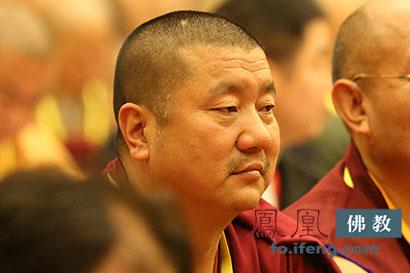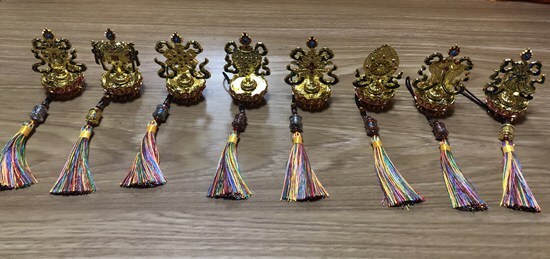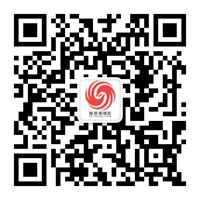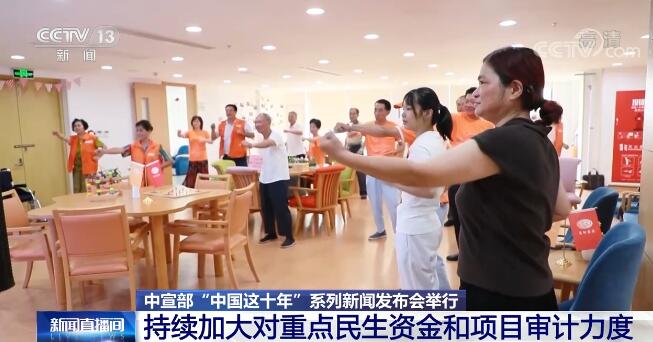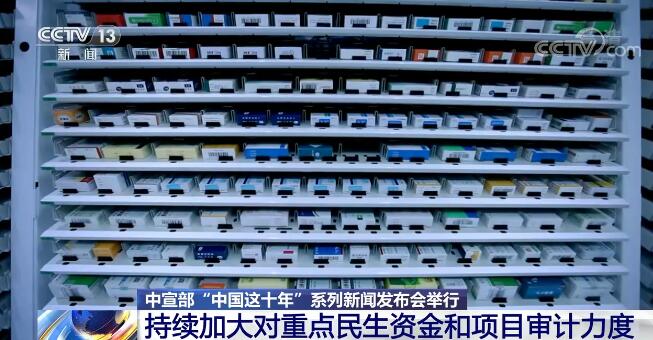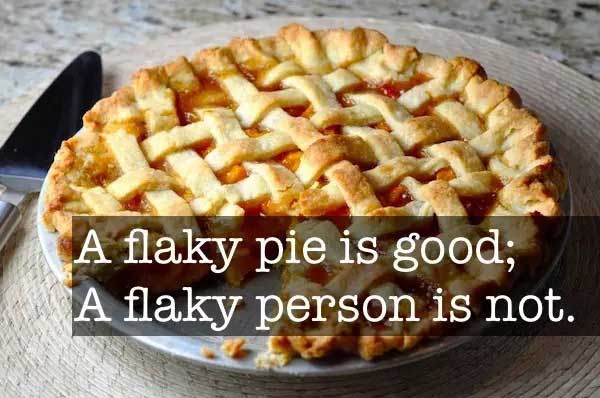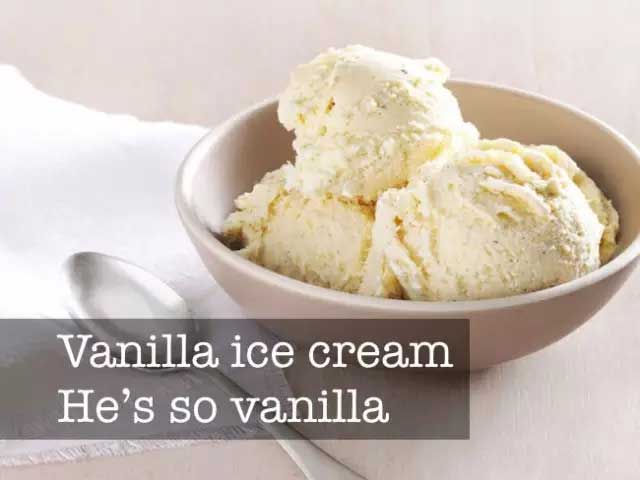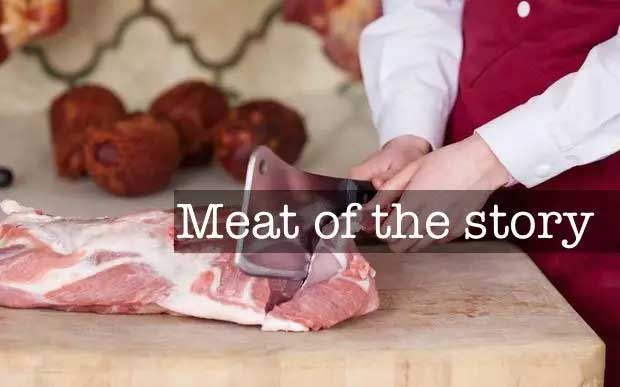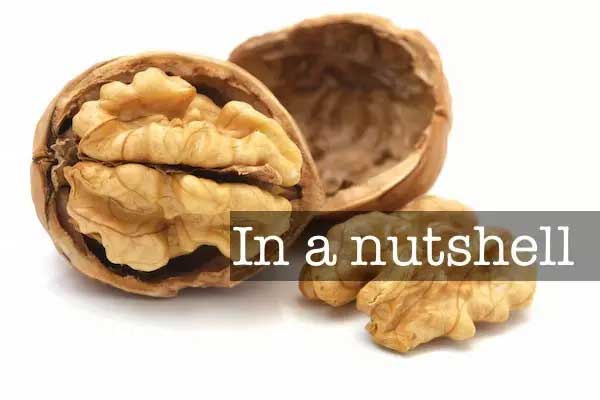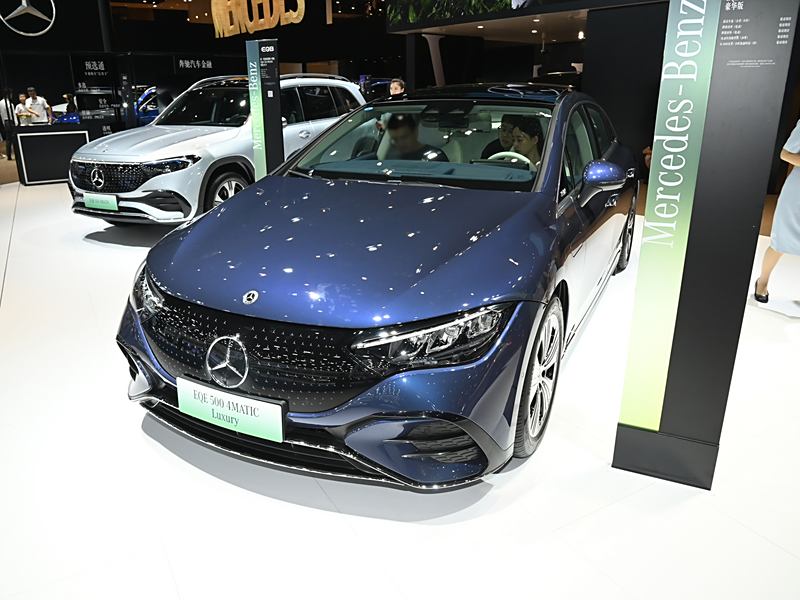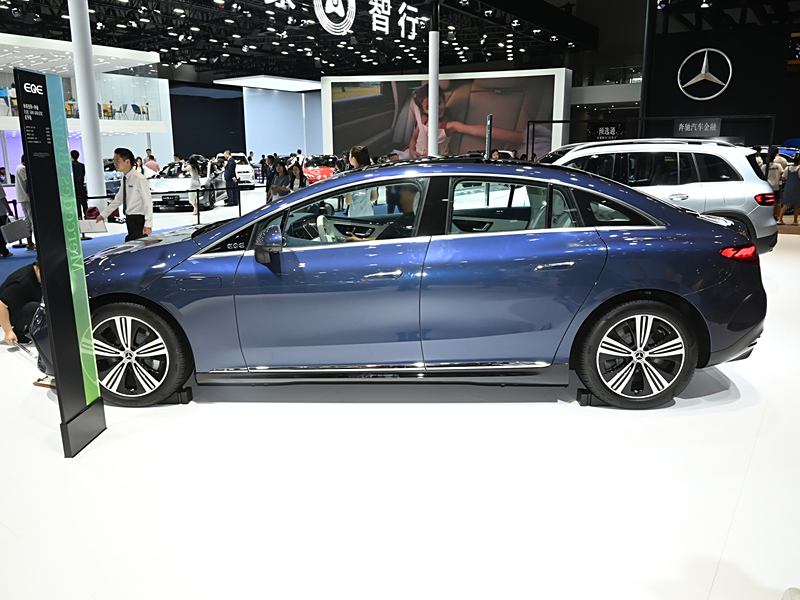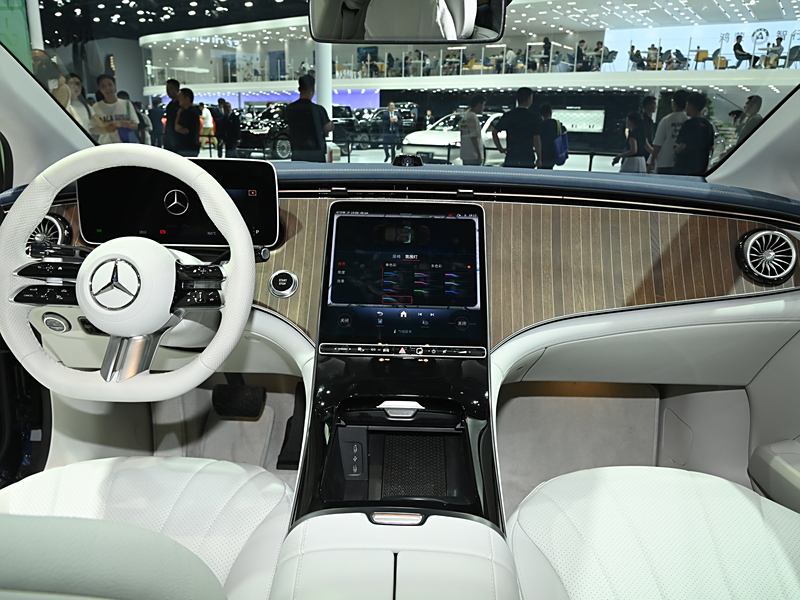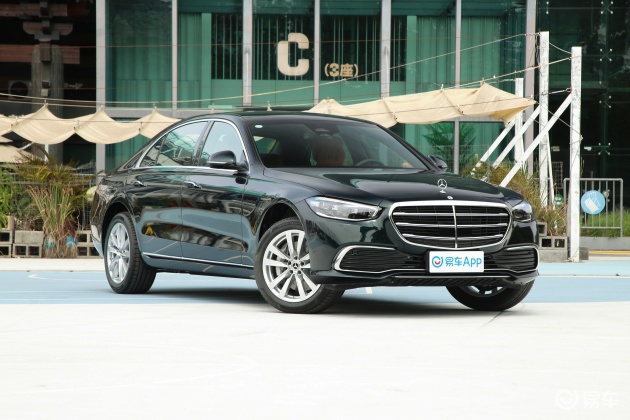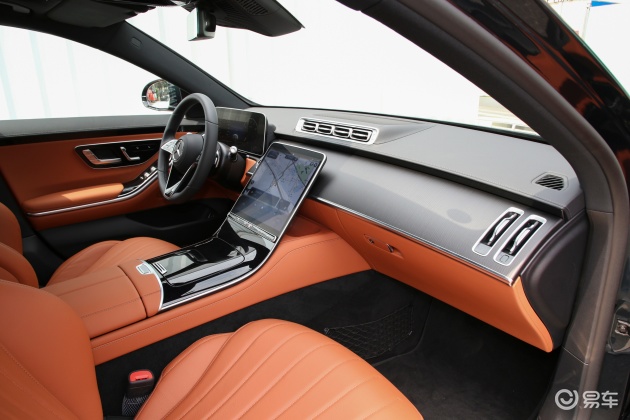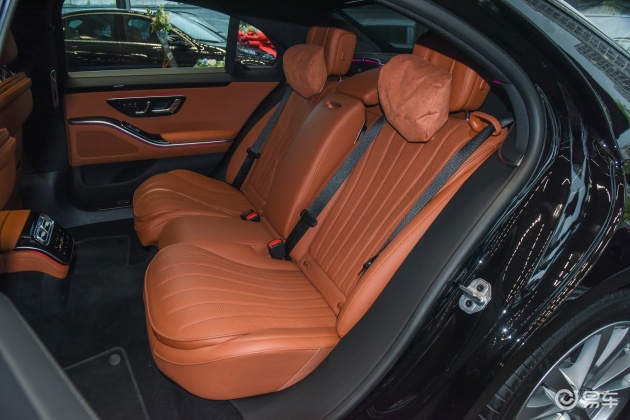(Promulgated by Order No.306 of the State Council of the People’s Republic of China on June 15, 2001, first revised according to the Decision of the State Council on Amending the Implementing Rules of People’s Republic of China (PRC) Patent Law on December 28, 2002, and second revised according to the Decision of the State Council on Amending the Implementing Rules of People’s Republic of China (PRC) Patent Law on January 9, 2010).
Chapter I General Principles
Article 1 These Rules are formulated in accordance with the Patent Law of People’s Republic of China (PRC) (hereinafter referred to as the Patent Law).
Article 2 All formalities stipulated in the Patent Law and these Detailed Rules shall be handled in written form or other forms stipulated by the patent administration department of the State Council.
Article 3 All documents submitted in accordance with the Patent Law and these Rules shall be in Chinese. Where the state has unified scientific and technological terms, standardized words shall be adopted; If there is no unified Chinese translation of foreigners’ names, place names and technical terms, the original text shall be indicated.
All kinds of certificates and supporting documents submitted in accordance with the Patent Law and these Rules are in foreign languages, and the patent administration department of the State Council may require the parties concerned to attach Chinese translations within a specified time limit when it deems it necessary; If it is not attached at the expiration, it shall be deemed that the certificate and supporting documents have not been submitted.
Article 4 All documents mailed to the patent administration department in the State Council shall be submitted on the postmark date; If the postmark date is unclear, the date of receipt by the patent administration department in the State Council shall be the date of submission, unless the parties concerned can provide proof.
Various documents of the patent administration department in the State Council may be delivered to the parties concerned by mail, direct delivery or other means. If the parties entrust a patent agency, the documents shall be sent to the patent agency; If a patent agency is not entrusted, the document shall be sent to the contact person specified in the request.
All kinds of documents mailed by the patent administration department in the State Council are presumed to be the date of receipt of the documents by the parties concerned after 15 days from the date of issuance of the documents.
Documents that should be delivered directly according to the provisions of the patent administration department of the State Council shall be delivered on the date of delivery.
If the delivery address of the document is unclear and it cannot be mailed, it can be served to the parties by announcement. One month after the date of announcement, the document shall be deemed to have been delivered.
Article 5 The first day of various deadlines stipulated in the Patent Law and these Detailed Rules shall not be counted as the deadline. If the term is calculated in years or months, the expiration date shall be the corresponding day of the last month; If there is no corresponding day in the month, the expiration date shall be the last day of the month; If the expiration date is a statutory holiday, the expiration date shall be the first working day after the holiday.
Article 6 Where a party delays the time limit specified in the Patent Law or these Detailed Rules or the time limit specified by the patent administration department in the State Council due to irresistible reasons, resulting in the loss of his rights, he may request the patent administration department in the State Council to restore his rights within two months from the date when the obstacle is removed, or at the latest within two years from the date when the time limit expires.
In addition to the circumstances specified in the preceding paragraph, if a party delays the time limit specified in the Patent Law or these Rules or the time limit specified by the patent administration department in the State Council for other legitimate reasons, resulting in the loss of his rights, he may request the patent administration department in the State Council to restore his rights within 2 months from the date of receiving the notice from the patent administration department in the State Council.
Where a party requests the restoration of rights in accordance with the provisions of the first paragraph or the second paragraph of this article, it shall submit a request for the restoration of rights, explain the reasons, attach relevant supporting documents when necessary, and go through the corresponding procedures that should be handled before the loss of rights; In accordance with the provisions of the second paragraph of this article, a request for restoration of rights shall also be paid.
Where a party requests to extend the time limit specified by the patent administration department in the State Council, it shall explain the reasons to the patent administration department in the State Council and go through the relevant formalities before the expiration of the time limit.
The provisions of the first and second paragraphs of this article shall not apply to the time limit stipulated in Articles 24, 29, 42 and 68 of the Patent Law.
Article 7 Where a patent application involves national defense interests and needs to be kept confidential, it shall be accepted and examined by the national defense patent institution; Where the patent application accepted by the patent administrative department of the State Council involves national defense interests and needs to be kept confidential, it shall be handed over to the national defense patent institution for examination in time. If no reason for rejection is found after examination by the national defense patent agency, the patent administration department of the State Council shall make a decision to grant the national defense patent right.
Where the administrative department for patent in the State Council considers that the application for a patent for invention or utility model it accepts involves national security or major interests other than national defense interests and needs to be kept confidential, it shall promptly make a decision to treat it as a confidential patent application and notify the applicant. The special procedures for examination and reexamination of confidential patent applications and invalidation of confidential patent rights shall be formulated by the patent administration department of the State Council.
Article 8 The invention or utility model completed in China mentioned in Article 20 of the Patent Law refers to the invention or utility model completed in China with the substantial content of the technical scheme.
Any unit or individual that applies for a patent for an invention or utility model completed in China to a foreign country shall request the patent administration department of the State Council to conduct a confidential examination in one of the following ways:
(a) to apply for a patent directly to a foreign country or to submit an international application for a patent to a relevant foreign institution, a request shall be made to the patent administration department of the State Council in advance, and its technical scheme shall be explained in detail;
(2) Anyone who intends to apply for a patent in a foreign country or submit an international application for a patent to a relevant foreign institution after applying for a patent to the patent administration department in the State Council shall make a request to the patent administration department in the State Council before applying for a patent in a foreign country or submitting an international application for a patent to a relevant foreign institution.
Where an international patent application is submitted to the patent administrative department of the State Council, it shall be deemed that a request for confidentiality review has been made at the same time.
Article 9 After receiving the request submitted in accordance with Article 8 of these Rules, the patent administration department of the State Council shall, after examination, consider that the invention or utility model may involve national security or vital interests and need to be kept confidential, and shall promptly issue a notice of confidentiality review to the applicant; If the applicant fails to receive the notice of confidentiality review within 4 months from the date of submission of his request, he may apply for a patent for the invention or utility model abroad or submit an international patent application to the relevant foreign institutions.
Where the patent administration department in the State Council notifies the confidentiality review in accordance with the provisions of the preceding paragraph, it shall make a timely decision on whether confidentiality is required and notify the applicant. If the applicant fails to receive a decision on confidentiality within 6 months from the date of submission of his request, he may apply for a patent for the invention or utility model abroad or submit an international patent application to the relevant foreign institutions.
Article 10 The term "invention-creation that violates the law" as mentioned in Article 5 of the Patent Law does not include invention-creation that is actually prohibited by law.
Article 11. Except under the circumstances stipulated in Articles 28 and 42 of the Patent Law, the date of filing mentioned in the Patent Law means the priority date if there is priority.
Unless otherwise specified, the filing date mentioned in these Rules refers to the filing date stipulated in Article 28 of the Patent Law.
Article 12 The term "service invention-creation" as mentioned in Article 6 of the Patent Law refers to:
(1) Inventions and creations made in the course of their own work;
(2) Inventions and creations made by performing tasks other than their own jobs entrusted by their own units;
(3) Inventions and creations made within one year after retirement, transfer from the original unit or termination of labor and personnel relations, which are related to their own work undertaken by the original unit or tasks assigned by the original unit.
The unit mentioned in Article 6 of the Patent Law includes temporary work units; The material and technical conditions of the entity mentioned in Article 6 of the Patent Law refer to the capital, equipment, spare parts, raw materials or technical materials of the entity that are not disclosed to the public.
Article 13 The inventor or designer mentioned in the Patent Law refers to a person who has made creative contributions to the substantive features of invention-creation. In the process of completing the invention-creation, a person who is only responsible for organizing the work, providing convenience for the utilization of material and technical conditions or engaging in other auxiliary work is not an inventor or designer.
Article 14 Where the patent right is transferred for other reasons except in accordance with the provisions of Article 10 of the Patent Law, the parties concerned shall go through the formalities for the transfer of the patent right with the patent administration department of the State Council on the strength of relevant supporting documents or legal documents.
The patent licensing contract concluded between the patentee and others shall be filed with the patent administrative department of the State Council within 3 months from the date when the contract comes into effect.
Where the patent right is pledged, the pledgor and the pledgee shall jointly register the pledge with the patent administration department of the State Council.
Chapter II Application for a Patent
Article 15 Anyone who applies for a patent in written form shall submit the application documents in duplicate to the patent administration department of the State Council.
To apply for a patent in other forms prescribed by the administrative department for patent in the State Council, it shall meet the prescribed requirements.
Where the applicant entrusts a patent agency to apply for a patent and handle other patent affairs with the patent administration department of the State Council, it shall submit a power of attorney at the same time, indicating the authorization authority.
Where there are two or more applicants and no patent agency has been entrusted, unless otherwise stated in the request, the first applicant specified in the request shall be the representative.
Article 16 The request for an application for a patent for invention, utility model or design shall specify the following items:
(1) the name of the invention, utility model or design;
(2) If the applicant is a unit or individual in China, its name, address, postal code, organization code or identity card number; If the applicant is a foreigner, foreign enterprise or other foreign organization, its name, nationality or registered country or region;
(3) the name of the inventor or designer;
(4) Where the applicant entrusts a patent agency, the name and agency code of the entrusted agency and the name, practice license number and contact number of the patent agent designated by the agency;
(5) Where priority is claimed, the date of filing, the application number and the name of the original accepting institution of the first patent application filed by the applicant (hereinafter referred to as the earlier application);
(6) The signature or seal of the applicant or the patent agency;
(7) List of application documents;
(8) List of additional documents;
(nine) other relevant matters that need to be stated.
Article 17 The description of an application for a patent for invention or utility model shall indicate the name of the invention or utility model, which shall be consistent with the name in the request. The instructions shall include the following contents:
(1) Technical field: indicate the technical field to which the technical scheme to be protected belongs;
(2) Background technology: stating the background technology useful for understanding, searching and examining the invention or utility model; Possible, and cite documents reflecting these background technologies;
(3) Content of the invention: state clearly the technical problems to be solved by the invention or utility model and the technical scheme adopted to solve the technical problems, and state clearly the beneficial effects of the invention or utility model in comparison with the existing technology;
(4) Description of drawings: If there are drawings in the specification, a brief description of each drawing shall be given;
(5) Specific mode of implementation: specify in detail the preferred mode of realizing the invention or utility model that the applicant thinks; If necessary, give examples; If there are drawings, refer to the drawings.
An applicant for a patent for invention or utility model shall write the specification in the manner and order specified in the preceding paragraph, and write the title in front of each part of the specification, unless the nature of the invention or utility model can be written in other ways or order to save the length of the specification and enable others to accurately understand the invention or utility model.
The description of the invention or utility model shall use standardized words and clear sentences, and shall not use "as claimed in claim … … The … …” A kind of quotation, also may not use commercial propaganda language.
Where an application for a patent for invention contains one or more nucleotide or amino acid sequences, the specification shall include a list of sequences conforming to the provisions of the patent administration department of the State Council. The applicant shall submit the sequence table as a separate part of the specification, and submit a computer-readable copy of the sequence table in accordance with the provisions of the patent administration department of the State Council.
The specification of an application for a patent for utility model shall have drawings showing the shape, structure or combination of the product to be protected.
Article 18 Several drawings of an invention or utility model shall be in accordance with "Figure 1, Figure 2, … …” Order number arrangement.
Reference symbols not mentioned in the text of the description of the invention or utility model shall not appear in the attached drawings, and reference symbols not appearing in the attached drawings shall not be mentioned in the text of the description. The reference numerals indicating the same component in the application documents shall be consistent.
The attached drawings should not contain other notes except necessary words.
Article 19 The patent claim shall record the technical features of the invention or utility model.
Where there are several claims in the patent claim, they shall be numbered in Arabic numerals.
The scientific and technological terms used in the claims shall be consistent with those used in the specification, and may have chemical formula or mathematical formula, but no illustrations. Unless absolutely necessary, "such as instruction manual … … Part of the "or" as shown in figure … … As shown in ".
The technical features in the claim can refer to the corresponding marks in the attached drawings of the specification, which should be placed in brackets after the corresponding technical features to facilitate the understanding of the claim. Reference signs shall not be construed as limiting the claims.
Article 20 The claims shall have independent claims or subordinate claims.
The independent claim shall reflect the technical scheme of the invention or utility model as a whole and record the necessary technical features to solve the technical problems.
The dependent claims shall further define the cited claims with additional technical features.
Article 21 An independent claim of an invention or utility model shall include a preamble part and a characteristic part, and shall be written in accordance with the following provisions:
(1) Preface: indicate the title of the subject of the technical scheme of the invention or utility model to be protected and the necessary technical features shared by the subject of the invention or utility model and the nearest existing technology;
(2) Characteristic part: Use "characterized by … …” Or similar terms, indicating the technical features of the invention or utility model that are different from the nearest existing technology. These features, together with those stated in the preamble, define the scope of the invention or utility model.
Where the nature of the invention or utility model is not suitable to be expressed in the way mentioned in the preceding paragraph, the independent claim may be written in other ways.
An invention or utility model shall have only one independent claim, which shall be written before the subordinate claim of the same invention or utility model.
Article 22 A dependent claim of an invention or utility model shall include a quoting part and a defining part, and shall be written in accordance with the following provisions:
(1) Citation part: indicate the serial number of the cited claim and its subject name;
(2) Defined part: indicating the additional technical features of the invention or utility model.
Subordinate claims can only refer to previous claims. A plurality of subordinate claims that cite more than two claims can only cite the preceding claim in one way, and shall not be used as the basis of another plurality of subordinate claims.
Article 23 The abstract of the specification shall indicate the summary of the contents disclosed in the application for a patent for invention or utility model, that is, the name of the invention or utility model and its technical field, and clearly reflect the technical problem to be solved, the main points of the technical scheme to solve the problem and the main uses.
The abstract of the specification can contain the chemical formula that best explains the invention; An application for a patent with drawings shall also provide a drawing that best illustrates the technical characteristics of the invention or utility model. The size and clarity of the attached drawings shall ensure that all details in the drawings can still be clearly distinguished when the drawings are reduced to 4cm× 6cm. The text of the abstract shall not exceed 300 words. Commercial advertising language shall not be used in the abstract.
Article 24. Where an invention for which a patent is applied involves a new biological material, which is not available to the public and the description of the biological material is insufficient to enable technicians in the field to implement the invention, in addition to complying with the relevant provisions of the Patent Law and these Detailed Rules, the applicant shall also go through the following procedures:
(1) Submit the sample of the biological material to the preservation unit recognized by the patent administration department of the State Council for preservation before the application date or at the latest on the application date (priority date if there is priority), and submit the preservation certificate and survival certificate issued by the preservation unit at the time of application or at the latest within 4 months from the application date; If the certificate is not submitted at the expiration, the sample shall be deemed as not submitted for preservation;
(2) In the application documents, provide information about the characteristics of the biomaterial;
(3) An application for a patent involving the preservation of samples of biomaterials shall indicate the classification and naming of the biomaterials (indicating the Latin name), the name, address, preservation date and preservation number of the unit that preserved the samples of biomaterials in the request and specification; If it is not specified at the time of application, it shall be corrected within 4 months from the date of application; If it is not corrected within the time limit, it shall be deemed that it has not been submitted for preservation.
Article 25 Where an applicant for a patent for invention preserves samples of biological materials in accordance with the provisions of Article 24 of these Rules, and after the publication of the application for a patent for invention, any unit or individual needs to use the biological materials involved in the application for a patent for invention for experimental purposes, it shall make a request to the patent administration department of the State Council, and specify the following items:
(1) The name and address of the claimant;
(2) A guarantee that the biomaterial will not be provided to anyone else;
(3) a guarantee that it will only be used for experimental purposes before the patent right is granted.
Article 26 The term "genetic resources" as mentioned in the Patent Law refers to materials that contain genetic functional units and have actual or potential value, such as human bodies, animals, plants or microorganisms. Inventions made by relying on genetic resources as mentioned in the Patent Law refer to inventions made by using the genetic function of genetic resources.
Where an application for a patent is filed for an invention-creation completed by relying on genetic resources, the applicant shall explain it in the request and fill in the form formulated by the patent administration department of the State Council.
Article 27 Where an applicant requests color protection, he shall submit color pictures or photographs.
The applicant shall submit relevant pictures or photographs on the contents that need to be protected for each design product.
Article 28 A brief description of a design shall specify the name and purpose of the design product, the design points of the design, and specify a picture or photograph that best shows the design points. If the view is omitted or the color protection is requested, it shall be stated in the brief description.
Where an application for a patent for design is filed for a number of similar designs of the same product, one of them shall be designated as the basic design in the brief description.
The brief description shall not use commercial advertising language, nor shall it be used to explain the performance of the product.
Article 29 The administrative department for patent in the State Council may, when it deems it necessary, require the applicant for a patent for design to submit samples or models of products using the design. The volume of the sample or model shall not exceed 30cm× 30cm× 30cm, and the weight shall not exceed 15kg. Perishable, fragile or dangerous goods shall not be submitted as samples or models.
Article 30 An international exhibition recognized by the government of China as mentioned in Item (1) of Article 24 of the Patent Law refers to an international exhibition registered with or recognized by the Bureau of International Exhibitions as stipulated in the Convention on International Exhibitions.
The academic conference or technical conference mentioned in Item (2) of Article 24 of the Patent Law refers to the academic conference or technical conference organized by the relevant competent authorities in the State Council or national academic organizations.
Where the invention-creation for which a patent is applied falls under any of the circumstances listed in Item (1) or Item (2) of Article 24 of the Patent Law, the applicant shall make a declaration when filing the patent application, and submit the documents certifying that the invention-creation has been exhibited or published, and the date of exhibition or publication, issued by the organization of the relevant international exhibition, academic conference or technical conference within two months from the date of application.
Where the invention-creation for which a patent is applied is under any of the circumstances listed in Item (3) of Article 24 of the Patent Law, the administrative department for patent in the State Council may require the applicant to submit supporting documents within a specified time limit when it deems it necessary.
Where the applicant fails to make a declaration and submit supporting documents in accordance with the provisions of the third paragraph of this article, or fails to submit supporting documents within the specified time limit in accordance with the provisions of the fourth paragraph of this article, the provisions of Article 24 of the Patent Law shall not apply to his application.
Article 31 Where an applicant claims foreign priority in accordance with Article 30 of the Patent Law, the copy of the earlier application documents submitted by the applicant shall be certified by the original accepting institution. In accordance with the agreement signed between the patent administrative department of the State Council and the accepting institution, if the patent administrative department of the State Council obtains a copy of the earlier application documents through electronic exchange, it shall be deemed that the applicant has submitted a copy of the earlier application documents certified by the accepting institution. Where domestic priority is claimed, the applicant shall be deemed to have submitted a copy of the earlier application documents if the application date and application number of the earlier application are indicated in the request.
Where priority is claimed, but one or two contents of the application date, application number and the name of the original accepting institution of the earlier application are omitted or misspelled in the request, the patent administration department of the State Council shall notify the applicant to make corrections within a specified time limit; If no correction is made within the time limit, it shall be deemed that priority has not been claimed.
Where the name of the applicant claiming priority is inconsistent with the name of the applicant recorded in the copy of the earlier application documents, the certificate of priority transfer shall be submitted. If the certificate is not submitted, it shall be deemed that priority has not been claimed. Where the applicant for a patent application for design claims foreign priority, if the earlier application did not include a brief description of the design, and the brief description submitted by the applicant in accordance with Article 28 of these Rules does not exceed the scope indicated by the pictures or photographs in the earlier application documents, it shall not affect his priority.
Article 32 An applicant may claim one or more priorities in an application for a patent; Where multiple priorities are claimed, the priority period of the application shall be calculated from the earliest priority date.
The applicant claims domestic priority, and if the earlier application is an application for a patent for invention, he may file an application for a patent for invention or utility model on the same subject; Where the earlier application is an application for a patent for utility model, an application for a patent for utility model or invention may be filed on the same subject. However, when the latter application is filed, if the subject matter of the earlier application is under any of the following circumstances, it shall not be used as the basis for claiming domestic priority:
(1) Foreign priority or domestic priority has been claimed;
(2) The patent right has been granted;
(3) Belonging to a divisional application filed in accordance with regulations.
Where the applicant claims domestic priority, the earlier application shall be deemed to have been withdrawn from the date of filing the later application.
Article 33 Where an applicant who has no habitual residence or business office in China applies for a patent or claims foreign priority, the patent administration department in the State Council may require him to provide the following documents when it deems it necessary:
(1) If the applicant is an individual, his nationality certificate;
(2) The certification documents of the country or region where the applicant is an enterprise or other organization;
(three) the applicant’s country, the recognition of China units and individuals can enjoy the patent right, priority and other patent-related rights in that country according to the same conditions as the nationals of that country.
Article 34 In accordance with the provisions of Article 31, paragraph 1, of the Patent Law, two or more inventions or utility models that can be filed as one patent application and belong to a general inventive concept shall be technically interrelated and contain one or more identical or corresponding specific technical features, in which the specific technical features refer to the technical features that each invention or utility model as a whole contributes to the existing technology.
Article 35 In accordance with the provisions of the second paragraph of Article 31 of the Patent Law, if multiple similar designs of the same product are filed as one application, the other designs of the product shall be similar to the basic design specified in the brief description. There shall be no more than 10 similar designs in an application for a patent for design.
The term "two or more designs of products in the same category and sold or used in complete sets" as mentioned in Article 31, paragraph 2 of the Patent Law means that all products belong to the same category in the classification table, are customarily sold or used at the same time, and the designs of all products have the same design concept.
Where two or more designs are filed as one application, the serial number of each design shall be marked before the name of each picture or photograph of each design product.
Article 36 Where an applicant withdraws his patent application, he shall make a declaration to the patent administration department of the State Council, stating the name of the invention-creation, the application number and the date of application.
If the declaration of withdrawing the patent application is made after the patent administrative department of the State Council has made good preparations for publishing the patent application documents, the application documents shall still be published; However, the statement of withdrawing the patent application shall be announced in the patent bulletin published later.
Chapter III Examination and Approval of Patent Applications
Article 37 In the process of preliminary examination, substantive examination, reexamination and invalidation, the person conducting the examination and trial shall voluntarily withdraw, and the party concerned or other interested parties may ask him to withdraw:
(1) Being a close relative of the party concerned or his agent;
(2) Having an interest in the patent application or patent right;
(3) Having other relations with the parties or their agents, which may affect the impartial examination and trial;
(4) Members of the Patent Reexamination Board have participated in the examination of the original application.
Article 38 After receiving the request, specification (utility model must include attached drawings) and claim of an application for a patent for invention or utility model, or the request, picture or photograph of design and a brief description, the patent administration department in the State Council shall specify the date of application, give the application number and notify the applicant.
Article 39 In any of the following circumstances, the patent administrative department of the State Council shall not accept the patent application documents and notify the applicant:
(1) An application for a patent for invention or utility model lacks a request, a specification (the utility model has no appended drawings) or a claim, or an application for a patent for design lacks a request, a picture or a photograph and a brief explanation;
(2) Not using Chinese;
(three) does not meet the provisions of the first paragraph of Article 121st of these rules;
(4) The applicant’s name or address is missing in the request;
(5) It is obviously not in conformity with the provisions of Article 18 or Paragraph 1 of Article 19 of the Patent Law;
(6) The category of the patent application (invention, utility model or design) is unclear or difficult to determine.
Article 40 Where the description of the drawings is written in the specification, but there are no drawings or some drawings are missing, the applicant shall submit the drawings within the time limit specified by the patent administration department of the State Council or declare the cancellation of the description of the drawings. Where the applicant submits the appended drawings, the date of submitting or mailing the appended drawings to the patent administration department of the State Council shall be the application date; If the explanation of the appended drawings is cancelled, the original application date shall be retained.
Forty-first two or more applicants on the same day (refers to the date of application; Where there is priority, it refers to the priority date), if you apply for a patent for the same invention-creation, you shall determine the applicant through consultation after receiving the notice from the patent administration department of the State Council.
Where the same applicant applies for both a patent for utility model and an invention patent for the same invention-creation on the same day (the date of application), it shall separately state that another patent has been applied for the same invention-creation; If there is no explanation, it shall be handled in accordance with the provisions of the first paragraph of Article 9 of the Patent Law that only one patent right can be granted for the same invention-creation.
When the patent administration department of the State Council announces the grant of the patent right for utility model, it shall announce that the applicant has applied for a patent for invention at the same time in accordance with the provisions of the second paragraph of this article.
If the application for a patent for invention is not found to be rejected after examination, the administrative department for patent in the State Council shall notify the applicant to renounce the patent right for utility model within the prescribed time limit. If the applicant renounces, the patent administration department of the State Council shall make a decision to grant the invention patent right, and announce the applicant’s declaration of renouncing the utility model patent right together with the announcement of granting the invention patent right. If the applicant does not agree to give up, the patent administration department of the State Council shall reject the application for a patent for invention; If the applicant fails to reply within the time limit, it shall be deemed to have withdrawn the application for a patent for invention.
The patent right for utility model shall be terminated as of the date when the patent right for invention is announced.
Article 42 Where an application for a patent includes two or more inventions, utility models or designs, the applicant may file a divisional application with the patent administration department of the State Council before the expiration of the time limit specified in the first paragraph of Article 54 of these Rules; However, if the patent application has been rejected, withdrawn or deemed withdrawn, a divisional application cannot be filed.
Where the patent administration department of the State Council considers that a patent application does not conform to the provisions of Article 31 of the Patent Law and Article 34 or Article 35 of these Rules, it shall notify the applicant to amend its application within a specified time limit; If the applicant fails to reply within the time limit, the application shall be deemed to have been withdrawn.
A divisional application shall not change the category of the original application.
Article 43 A divisional application filed in accordance with the provisions of Article 42 of these Rules may retain the original filing date, and if it enjoys priority, it may retain the priority date, but it shall not exceed the scope recorded in the original application.
The divisional application shall go through the relevant formalities in accordance with the provisions of the Patent Law and these Detailed Rules.
The request for divisional application shall indicate the application number and date of the original application. When submitting a divisional application, the applicant shall submit a copy of the original application documents; Where the original application enjoys priority, a copy of the priority document of the original application shall be submitted.
Article 44 The term "preliminary examination" as mentioned in Articles 34 and 40 of the Patent Law refers to examining whether the patent application has the documents and other necessary documents specified in Article 26 or 27 of the Patent Law, and whether these documents conform to the prescribed format, and examining the following items:
(1) Whether the application for a patent for invention obviously falls under the circumstances stipulated in Articles 5 and 25 of the Patent Law, whether it does not conform to the provisions of Articles 18, 19, paragraph 1 and 20 of the Patent Law or Article 16 and 26, paragraph 2 of these Rules, and whether it obviously does not conform to the provisions of Article 2, paragraph 5 of Article 26, paragraph 1 of Article 31 and Article 33 of the Patent Law or Articles 17 to 21 of these Rules;
(2) Whether the application for a patent for utility model obviously falls under the circumstances stipulated in Articles 5 and 25 of the Patent Law, whether it does not conform to the provisions of Articles 18, 19, paragraph 1 and 20 of the Patent Law or Articles 16 to 19 and 21 to 23 of these Rules, and whether it obviously does not conform to Article 2, paragraph 3, Article 22, paragraph 2 and paragraph 4, Article 26, paragraph 3 and paragraph 4, and Article 31 of the Patent Law.
(3) Whether the application for a patent for design obviously falls under the circumstances specified in Article 5 and Item (6) of Paragraph 1 of Article 25 of the Patent Law, whether it does not conform to the provisions of Article 18 and Paragraph 1 of Article 19 of the Patent Law or Articles 16, 27 and 28 of these Rules, and whether it obviously does not conform to Paragraph 4 of Article 2, Paragraph 1 of Article 23, Paragraph 2 of Article 27, Paragraph 2 of Article 31, Article 33 or this Patent Law.
(4) Whether the application documents comply with the provisions of Article 2 and Article 3, paragraph 1, of these Rules.
The patent administration department of the State Council shall notify the applicant of the examination opinions and ask him to state his opinions or make corrections within a specified time limit; If the applicant fails to reply within the time limit, his application shall be deemed to have been withdrawn. If, after the applicant has stated his opinions or made corrections, the administrative department for patent in the State Council still considers that it does not meet the requirements listed in the preceding paragraph, it shall reject it.
Article 45 Except for the patent application documents, any other documents related to the patent application submitted by the applicant to the patent administration department of the State Council shall be deemed to have not been submitted under any of the following circumstances:
(1) Failing to use the prescribed format or filling in the form that does not conform to the provisions;
(2) Failing to submit the certification materials as required.
The administrative department for patent in the State Council shall notify the applicant of the examination opinions deemed to have not been submitted.
Article 46 Where an applicant requests the early publication of his application for a patent for invention, he shall make a statement to the patent administration department of the State Council. After preliminary examination of the application, the administrative department for patent in the State Council shall immediately publish the application, unless it is rejected.
Article 47 Where the applicant specifies the products using designs and their categories, it shall use the classification table of design products published by the patent administration department of the State Council. Where the category of the product using the design is not specified or the category written is inaccurate, the administrative department for patent in the State Council may supplement or modify it.
Article 48 From the date of publication of an application for a patent for invention to the date of announcement of the grant of a patent right, any person may submit an opinion to the patent administration department of the State Council on an application that does not conform to the provisions of the Patent Law, and explain the reasons.
Article 49 Where an applicant for a patent for invention is unable to submit the retrieval materials or examination results specified in Article 36 of the Patent Law due to justifiable reasons, he shall make a statement to the administrative department for patent in the State Council, and make a supplementary payment after obtaining the relevant materials.
Article 50 The patent administration department of the State Council shall notify the applicant when examining the patent application on its own according to the provisions of paragraph 2 of Article 35 of the Patent Law.
Article 51 An applicant for a patent for invention may, within three months from the date of receiving the notice from the patent administration department of the State Council that the application for a patent for invention has entered the substantive examination stage, propose amendments to the application for a patent for invention on his own initiative.
An applicant for a patent for utility model or design may, within 2 months from the date of application, propose amendments to the application for a patent for utility model or design.
Where the applicant modifies the patent application documents after receiving the notice of examination opinions issued by the patent administrative department of the State Council, it shall modify the defects pointed out in the notice.
The patent administration department in the State Council can correct the obvious errors of words and symbols in the patent application documents by itself. Where the administrative department for patent in the State Council modifies it by itself, it shall notify the applicant.
Article 52. Except for the modification or addition or deletion of individual words, a replacement page shall be submitted in the prescribed format in the modified part of the specification or claim of an application for a patent for invention or utility model. Where the picture or photograph of an application for a patent for design is modified, a replacement page shall be submitted in accordance with the provisions.
Article 53 In accordance with Article 38 of the Patent Law, the circumstances in which an application for a patent for invention should be rejected after substantive examination refer to:
(1) The application falls under the circumstances specified in Articles 5 and 25 of the Patent Law, or the patent right cannot be obtained according to Article 9 of the Patent Law;
(2) The application does not conform to the provisions of Paragraph 2 of Article 2, Paragraph 1 of Article 20, Paragraph 3, Paragraph 4, Paragraph 5 of Article 26, Paragraph 1 of Article 31 or Paragraph 2 of Article 20 of these Rules;
(3) The amendment of the application does not conform to the provisions of Article 33 of the Patent Law, or the divisional application does not conform to the provisions of Paragraph 1 of Article 43 of these Rules.
Article 54 After the patent administrative department of the State Council issues a notice of granting the patent right, the applicant shall go through the registration formalities within 2 months from the date of receiving the notice. Where the applicant goes through the registration formalities on schedule, the patent administrative department of the State Council shall grant the patent right, issue the patent certificate and make an announcement.
Failure to go through the registration formalities at the expiration of the period shall be deemed as giving up the right to obtain the patent right.
Article 55 If the application for a confidential patent is not found to be rejected after examination, the patent administration department in the State Council shall make a decision to grant the confidential patent right, issue a confidential patent certificate, and register the relevant matters of the confidential patent right.
Article 56 After the announcement of the decision to grant the patent right for utility model or design, the patentee or interested party specified in Article 60 of the Patent Law may request the patent administrative department of the State Council to make a patent evaluation report.
Where a patent evaluation report is requested, a request for patent evaluation report shall be submitted, indicating the patent number. Each request shall be limited to one patent right.
If the request for patent evaluation report is not in conformity with the provisions, the patent administration department of the State Council shall notify the claimant to make corrections within the specified time limit; If the claimant fails to make corrections within the time limit, it shall be deemed that he has not made a request.
Article 57 The patent administrative department of the State Council shall make a patent evaluation report within 2 months after receiving the request for patent evaluation report. For the same utility model or design patent right, if multiple claimants request to make a patent evaluation report, the patent administration department of the State Council will only make a patent evaluation report. Any unit or individual may consult or copy the patent evaluation report.
Article 58 The administrative department for patent in the State Council shall, once found, correct the mistakes in patent announcements and patent pamphlets, and announce the corrections made.
Chapter iv reexamination of patent applications and invalidation of patent rights
Article 59 The Patent Reexamination Board is composed of technical experts and legal experts designated by the patent administration department in the State Council, and the chairman of the board is concurrently the person in charge of the patent administration department in the State Council.
Article 60 Where a request for reexamination is made to the Patent Reexamination Board in accordance with the provisions of Article 41 of the Patent Law, a request for reexamination shall be submitted, the reasons shall be explained, and relevant evidence shall be attached if necessary.
Where the request for reexamination does not conform to the provisions of Article 19, paragraph 1, or Article 41, paragraph 1 of the Patent Law, the Patent Reexamination Board shall not accept it, and notify the petitioner in writing and explain the reasons.
If the written request for reexamination does not conform to the prescribed format, the person requesting reexamination shall make corrections within the time limit specified by the Patent Reexamination Board; If no correction is made at the expiration of the time limit, the request for reexamination shall be deemed not to have been made.
Article 61 The applicant may amend the patent application documents when making a request for reexamination or responding to the notice of reexamination of the Patent Reexamination Board. However, the amendment should be limited to eliminating the defects pointed out in the rejection decision or the notice of review.
The revised patent application documents shall be submitted in duplicate.
Article 62 The Patent Reexamination Board shall forward the accepted request for reexamination to the original examination department of the patent administration department of the State Council for examination. If the original examination department agrees to revoke the original decision at the request of the reexamination claimant, the Patent Reexamination Board shall make a reexamination decision accordingly and notify the reexamination claimant.
Article 63 If, after reexamination, the Patent Reexamination Board considers that the reexamination request is not in conformity with the relevant provisions of the Patent Law and these Rules, it shall notify the petitioner and request him to state his opinions within a specified time limit. If there is no reply at the expiration of the time limit, the request for reexamination shall be deemed to have been withdrawn; After stating opinions or making amendments, if the Patent Reexamination Board considers that it still does not conform to the relevant provisions of the Patent Law and these Rules, it shall make a reexamination decision to maintain the original rejection decision.
If, after reexamination, the Patent Reexamination Board considers that the original rejection decision does not conform to the relevant provisions of the Patent Law and these Rules, or that the revised patent application document eliminates the defects pointed out in the original rejection decision, it shall revoke the original rejection decision and the original examination department shall continue the examination procedure.
Article 64. Before the Patent Re-examination Board makes a decision, the applicant for re-examination may withdraw his request for re-examination.
Where the reexamination claimant withdraws his reexamination request before the Patent Reexamination Board makes a decision, the reexamination procedure shall be terminated.
Article 65 In accordance with the provisions of Article 45 of the Patent Law, a request for invalidation or partial invalidation of the patent right shall be submitted to the Patent Reexamination Board in duplicate with the necessary evidence. The request for invalidation shall, in combination with all the evidence submitted, specify the reasons for the request for invalidation and indicate the evidence on which each reason is based.
The reason for the request for invalidation mentioned in the preceding paragraph refers to that the invention-creation granted a patent does not conform to the provisions of Article 2, Paragraph 1 of Article 20, Article 22, Article 23, Paragraph 3, Paragraph 4 of Article 26, Paragraph 2 of Article 27, Article 33 or Paragraph 2 of Article 20 and Paragraph 1 of Article 43 of these Rules, or belongs to the provisions of Article 5 and Article 25 of the Patent Law, or the patent right cannot be obtained according to the provisions of Article 9 of the Patent Law.
Rule 66 Where the request for invalidation of the patent right does not conform to the provisions of Paragraph 1 of Article 19 of the Patent Law or Article 65 of these Rules, the Patent Reexamination Board shall not accept it.
After the Patent Reexamination Board has made a decision on the request for invalidation, the Patent Reexamination Board shall not accept the request for invalidation on the same grounds and evidence.
Where a request for invalidation of the patent right for a design is made on the grounds that it does not conform to the third paragraph of Article 23 of the Patent Law, but no evidence to prove the conflict of rights is submitted, the Patent Reexamination Board shall not accept it.
If the request for invalidation of the patent right does not conform to the prescribed format, the claimant for invalidation shall make corrections within the time limit specified by the Patent Reexamination Board; If no correction is made at the expiration of the time limit, the request for invalidation shall be deemed not to have been made.
Article 67 After the Patent Reexamination Board accepts the request for invalidation, the claimant may add reasons or supplement evidence within one month from the date of filing the request for invalidation. Where reasons are added or additional evidence is added within the time limit, the Patent Reexamination Board may not consider it.
Article 68 The Patent Reexamination Board shall send a copy of the request for invalidation of the patent right and relevant documents to the patentee, requiring him to state his opinions within a specified time limit.
The patentee and the claimant for invalidation shall reply to the notice of transferring documents or the notice of examining the request for invalidation issued by the Patent Reexamination Board within a specified time limit; Failure to reply within the time limit shall not affect the trial of the Patent Reexamination Board.
Article 69 In the process of examining the request for invalidation, the patentee of a patent for invention or utility model may amend his claim, but shall not expand the scope of protection of the original patent.
The patentee of a patent for invention or utility model shall not modify the patent specification and drawings, and the patentee of a patent for design shall not modify the pictures, photographs and brief descriptions.
Article 70 The Patent Reexamination Board may, at the request of the parties concerned or the needs of the case, decide to conduct an oral hearing on the request for invalidation.
If the Patent Reexamination Board decides to conduct an oral hearing on the request for invalidation, it shall issue a notice of oral hearing to the parties concerned, informing them of the date and place of the oral hearing. The parties concerned shall make a reply within the time limit specified in the notice.
If the claimant for invalidation fails to reply to the notice of oral hearing issued by the Patent Reexamination Board within the specified time limit and does not participate in the oral hearing, his request for invalidation shall be deemed to have been withdrawn; If the patentee does not participate in the oral hearing, he may try it by default.
Article 71 In the procedure for examining the request for invalidation, the time limit specified by the Patent Reexamination Board shall not be extended.
Rule 72 Before the Patent Reexamination Board makes a decision on the request for invalidation, the person requesting invalidation may withdraw his request.
Before the Patent Reexamination Board makes a decision, if the applicant for invalidation withdraws his request or his request for invalidation is deemed to have been withdrawn, the procedure for examining the request for invalidation shall be terminated. However, if the Patent Reexamination Board considers that a decision to declare the patent right invalid or partially invalid can be made based on the examination work already carried out, the examination procedure shall not be terminated.
Chapter V Compulsory License for Patent Exploitation
Article 73 The term "not fully exploiting the patent" as mentioned in Item (1) of Article 48 of the Patent Law means that the way or scale of exploiting the patent by the patentee and its licensee cannot meet the domestic demand for patented products or patented methods.
The patented drug mentioned in Article 50 of the Patent Law refers to any patented product in the medical field needed to solve public health problems or a product directly obtained according to the patented method, including the active ingredients needed to manufacture the patented product and the diagnostic supplies needed to use the product.
Article 74 Anyone who requests a compulsory license shall submit a written request for compulsory license to the administrative department for patent in the State Council, explaining the reasons and attaching relevant supporting documents.
The administrative department for patent in the State Council shall send a copy of the request for compulsory license to the patentee, who shall state his opinions within the time limit specified by the administrative department for patent in the State Council; Failure to reply at the expiration of the time limit shall not affect the decision made by the patent administration department of the State Council.
Before making a decision to reject the request for compulsory license or grant a compulsory license, the patent administration department in the State Council shall notify the requester and the patentee of the decision to be made and the reasons.
The decision of the patent administration department in the State Council to grant a compulsory license in accordance with the provisions of Article 50 of the Patent Law shall also comply with the provisions of relevant international treaties concluded or acceded to by China on granting a compulsory license to solve public health problems, except that China has made reservations.
Article 75 In accordance with the provisions of Article 57 of the Patent Law, if a request is made to the administrative department for patent in the State Council for a ruling on the amount of royalties, the parties concerned shall submit a written request for a ruling, and attach the supporting documents that the two parties cannot reach an agreement. The patent administrative department of the State Council shall make a ruling within 3 months from the date of receiving the request, and notify the parties concerned.
Chapter VI Awards and Remunerations for Inventors or Designers of Service Invention-Creation
Article 76 A unit that has been granted a patent right may agree with the inventor or designer or stipulate in its rules and regulations formulated according to law the way and amount of rewards and remuneration as stipulated in Article 16 of the Patent Law.
The rewards and remuneration given by enterprises and institutions to inventors or designers shall be handled in accordance with the provisions of the relevant state financial and accounting systems.
Article 77 Where a unit granted a patent right has not agreed with the inventor or designer, nor has it stipulated in its rules and regulations formulated according to law the way and amount of awards stipulated in Article 16 of the Patent Law, it shall give the inventor or designer a bonus within 3 months from the date of announcement of the patent right. The bonus for an invention patent shall be at least 3,000 yuan; The bonus for a patent for utility model or design shall be at least not less than that of 1000 yuan.
Where an invention-creation is completed because the suggestion of the inventor or designer is adopted by the unit to which it belongs, the unit that has been granted the patent right shall give a bonus from the superior.
Article 78 Where a unit granted a patent right has not agreed with the inventor or designer or stipulated the way and amount of remuneration as stipulated in Article 16 of the Patent Law in its rules and regulations formulated according to law, within the validity period of the patent right, after the invention-creation patent is implemented, it shall extract not less than 2% or not less than 0.2% from the business profit of the invention or utility model patent every year as remuneration to the inventor or designer, or give the inventor or designer a one-time remuneration with reference to the above ratio. Where a unit that has been granted a patent right licenses other units or individuals to exploit its patent, it shall extract not less than 10% of the collected royalties as remuneration to the inventor or designer.
Chapter VII Protection of Patent Right
Article 79 The department for the administration of patent work mentioned in the Patent Law and these Detailed Rules refers to the department for the administration of patent work established by the people’s governments of provinces, autonomous regions and municipalities directly under the Central Government and the people’s governments of cities divided into districts with heavy workload in patent management and practical handling capacity.
Article 80 The patent administrative department of the State Council shall provide professional guidance to the patent administrative department in handling patent infringement disputes, investigating and handling patent counterfeiting, and mediating patent disputes.
Article 81 Where a party requests to handle a patent infringement dispute or mediate a patent dispute, it shall be under the jurisdiction of the administrative department for patent work where the respondent is located or where the infringement occurred.
Where more than two departments in charge of patent work have jurisdiction over patent disputes, the parties may make a request to one of the departments in charge of patent work; Where a party makes a request to two or more departments that have jurisdiction over patent work, it shall be under the jurisdiction of the department that first accepts it.
Where the administrative department for patent affairs disputes the jurisdiction, the administrative department for patent affairs of the people’s government at a higher level shall designate the jurisdiction; Where there is no department in charge of patent work under the people’s government at a higher level, the jurisdiction shall be designated by the patent administration department of the State Council.
Article 82 In the course of handling a patent infringement dispute, if the respondent requests invalidation and is accepted by the Patent Reexamination Board, he may request the administrative department for patent affairs to suspend the handling.
Where the administrative department for patent affairs considers that the reason for suspension put forward by the respondent is obviously untenable, it may not suspend the processing.
Article 83 Where the patentee marks the patent mark on his patented product or the package of the product in accordance with Article 17 of the Patent Law, it shall mark it in the manner prescribed by the patent administration department of the State Council.
Where the patent mark does not conform to the provisions of the preceding paragraph, the administrative department for patent affairs shall order it to make corrections.
Article 84 The following acts are acts of counterfeiting patents as stipulated in Article 63 of the Patent Law:
(1) Marking a patent mark on a product or its packaging that has not been granted a patent right, continuing to mark the patent mark on the product or its packaging after the patent right is declared invalid or terminated, or marking the patent number of others on the product or its packaging without permission;
(2) selling the products mentioned in item (1);
(3) Calling a technology or design that has not been granted a patent right as a patented technology or design, calling a patent application as a patent, or using another person’s patent number without permission, so that the public will mistake the technology or design involved for a patented technology or design;
(4) Forging or altering patent certificates, patent documents or patent application documents;
(five) other acts that confuse the public and mistake the technology or design that has not been granted a patent right for a patented technology or design.
Before the termination of the patent right, the patent mark is marked on the patented product, the product directly obtained according to the patent method or its packaging according to law, and the promise to sell or sell the product after the termination of the patent right does not belong to the act of counterfeiting patents.
Where a product that is not known to be a counterfeit patent is sold, and the legal source of the product can be proved, the administrative department for patent affairs shall order it to stop selling, but it shall be exempted from the penalty of fine.
Article 85 Except as provided for in Article 60 of the Patent Law, the administrative department for patent affairs may, at the request of the parties concerned, mediate the following patent disputes:
(1) Disputes over the right to apply for a patent and the ownership of the patent;
(2) Disputes over the qualifications of inventors and designers;
(3) Disputes over the reward and remuneration of the inventor or designer of the service invention-creation;
(4) Disputes over the use of an invention after the publication of an application for a patent for invention and before the grant of the patent right without paying an appropriate fee;
(5) Other patent disputes.
For the disputes listed in Item (4) of the preceding paragraph, if a party requests the administrative department for patent affairs to mediate, it shall do so after the patent right is granted.
Article 86 If a party has a dispute over the right to apply for a patent or the ownership of a patent right and has requested the administrative department for patent affairs to mediate or bring a suit in a people’s court, he may request the patent administration department of the State Council to suspend the relevant procedures.
In accordance with the provisions of the preceding paragraph, a request for suspension of relevant procedures shall be submitted to the patent administration department of the State Council, and a copy of the relevant acceptance documents indicating the application number or patent number shall be attached.
After the conciliation statement made by the administrative department for patent affairs or the judgment made by the people’s court comes into effect, the parties concerned shall go through the formalities for resuming the relevant procedures with the patent administration department of the State Council. If the dispute over the right to apply for a patent or the ownership of a patent cannot be closed within one year from the date of requesting suspension, and it is necessary to continue to suspend the relevant procedures, the petitioner shall request an extension of the suspension within this time limit. If no extension is requested at the expiration of the time limit, the patent administration department of the State Council shall resume the relevant procedures on its own.
Article 87 If the people’s court decides to take preservation measures for the right to apply for a patent or the patent right in the trial of a civil case, the administrative department for patent in the State Council shall suspend the relevant procedures for the preserved right to apply for a patent or the patent right on the date of receiving the ruling indicating the application number or patent number and the notice of assistance in execution. If the people’s court fails to decide to continue to take preservation measures after the expiration of the preservation period, the patent administration department in the State Council will resume the relevant procedures on its own.
Article 88 The suspension of relevant procedures by the patent administration department of the State Council in accordance with the provisions of Articles 86 and 87 of these Rules refers to the suspension of the procedures of preliminary examination, substantive examination and reexamination of patent applications, the procedures of granting patent rights and the procedures of declaring patent rights invalid; Suspension of procedures for giving up, changing or transferring the patent right or patent application right, procedures for pledge of patent right and procedures for termination before the expiration of the patent right.
Chapter VIII Patent Registration and Patent Gazette
Article 89 The patent administrative department of the State Council shall set up a patent register to register the following matters related to patent applications and patent rights:
(1) Grant of patent right;
(2) Transfer of patent application right and patent right;
(3) Pledge, preservation and rescission of the patent right;
(four) the filing of the patent licensing contract;
(5) invalidation of the patent right;
(6) Termination of the patent right;
(7) Restoration of the patent right;
(8) Compulsory license for patent exploitation;
(9) the change of the name, nationality and address of the patentee.
Article 90 The patent administration department in the State Council regularly publishes patent bulletins and publishes or announces the following contents:
(a) the description and description of the application for a patent for invention;
(two) the request for substantive examination of the application for a patent for invention and the decision of the the State Council patent administration department to conduct substantive examination of the application for a patent for invention on its own;
(3) Rejection, withdrawal, deemed withdrawal, deemed abandonment, resumption and transfer of an application for a patent for invention after its publication;
(four) the granting of patent rights and the description of patent rights;
(5) An abstract of the description of the patent for invention or utility model, and a picture or photograph of the patent for design;
(6) Decryption of national defense patents and confidential patents;
(7) invalidation of the patent right;
(8) Termination and restoration of the patent right;
(9) Transfer of patent right;
(ten) the filing of the patent licensing contract;
(eleven) the pledge, preservation and termination of the patent right;
(12) Granting of compulsory license for patent exploitation;
(thirteen) the change of the name or address of the patentee;
(14) announcement service of documents;
(fifteen) corrections made by the patent administration department of the State Council;
(sixteen) other related matters.
Article 91 The patent administration department in the State Council shall provide patent bulletins, application pamphlets for invention patents and pamphlets for invention patents, utility model patents and design patents for the public to consult free of charge.
Article 92 The patent administration department in the State Council is responsible for exchanging patent documents with patent authorities or regional patent organizations in other countries and regions on the principle of reciprocity.
Chapter IX Expenses
Article 93 When applying for a patent and going through other formalities with the patent administration department of the State Council, the following fees shall be paid:
(1) Application fee, application surcharge, publication and printing fee and priority claim fee;
(two) the examination fee and reexamination fee for the application for a patent for invention;
(3) Patent registration fee, announcement printing fee and annual fee;
(four) the right to restore the request fee, the request fee for extension of the time limit;
(five) the fee for the change of description, the fee for the request for patent evaluation report and the fee for the request for invalidation.
The payment standards of various fees listed in the preceding paragraph shall be stipulated by the price management department of the State Council and the financial department in conjunction with the patent administration department of the State Council.
Article 94 The fees stipulated in the Patent Law and these Detailed Rules may be paid directly to the patent administration department in the State Council, remitted by post office or bank, or paid in other ways stipulated by the patent administration department in the State Council.
If remittance is made by post office or bank, the correct application number or patent number and the name of the fee paid shall be indicated on the remittance slip sent to the patent administration department of the State Council. Do not meet the provisions of this paragraph, as did not go through the payment procedures.
If the fee is paid directly to the patent administrative department of the State Council, the day of payment shall be the payment date; If the payment is made by post office remittance, the postmark date remitted by post office shall be the payment date; If the fees are paid by bank remittance, the actual remittance date of the bank shall be the payment date.
Where the patent fee is overpaid, re-paid or wrongly paid, the party concerned may, within 3 years from the date of payment, make a refund request to the patent administration department in the State Council, and the patent administration department in the State Council shall refund it.
Article 95 The applicant shall pay the application fee, publication and printing fee and necessary application surcharge within 2 months from the date of application or within 15 days from the date of receiving the acceptance notice; If it fails to pay or pay in full at the expiration of the time limit, its application shall be deemed to be withdrawn.
Where the applicant claims the priority, he shall pay the priority claim fee at the same time as the application fee; Failure to pay or pay in full at the expiration of the time limit shall be deemed as failure to claim priority.
Article 96 Where a party requests substantive examination or reexamination, it shall pay the fee within the relevant time limit stipulated in the Patent Law and these Rules. Failing to pay or pay in full at the expiration of the time limit shall be deemed as not making a request.
Article 97 When going through the registration formalities, the applicant shall pay the patent registration fee, the printing fee for the announcement and the annual fee for the year when the patent right is granted. Failure to pay or pay in full at the expiration of the period shall be deemed as failure to go through the registration formalities.
Article 98 The annual fee after the year in which the patent right is granted shall be paid before the expiration of the previous year. If the patentee fails to pay or fails to pay in full, the patent administration department of the State Council shall notify the patentee to pay back the annual fee within 6 months from the date when it expires, and pay the late fee at the same time; The amount of the late payment fee shall be calculated by adding 5% of the full annual fee of the current year for each time exceeding the prescribed payment time of 1 month; If it is not paid at the expiration of the time limit, the patent right shall be terminated from the date when the annual fee should be paid.
Ninety-ninth claims for restoration of rights shall be paid within the relevant time limit stipulated in these Rules; Failing to pay or pay in full at the expiration of the time limit shall be deemed as not making a request.
The request fee for extending the time limit shall be paid before the expiration of the corresponding time limit; Failing to pay or pay in full at the expiration of the time limit shall be deemed as not making a request.
The fee for the change of description items, the fee for the request for patent evaluation report and the fee for the request for invalidation shall be paid within one month from the date of making the request; Failing to pay or pay in full at the expiration of the time limit shall be deemed as not making a request.
Article 100 Where the applicant or patentee has difficulty in paying the fees specified in these Detailed Rules, he may, in accordance with the provisions, request the patent administration department of the State Council to reduce or postpone the payment. Measures for reducing or postponing payment shall be formulated by the finance department of the State Council in conjunction with the price management department of the State Council and the patent administration department of the State Council.
Chapter X Special Provisions on International Applications
Article 101 The patent administration department of the State Council shall accept international patent applications filed in accordance with the patent cooperation treaty in accordance with the provisions of Article 20 of the Patent Law.
The provisions of this chapter shall apply to the conditions and procedures for the international patent application filed in accordance with the patent cooperation treaty and designated by China (hereinafter referred to as the international application) to enter the processing stage of the patent administration department in the State Council (hereinafter referred to as the national stage in China); Where there are no provisions in this chapter, the relevant provisions of the Patent Law and other chapters of these Rules shall apply.
Article 102 An international application for which an international filing date has been determined and China has been designated in accordance with the Patent Cooperation Treaty shall be regarded as a patent application filed with the patent administration department of the State Council, and this international filing date shall be regarded as the filing date referred to in Article 28 of the Patent Law.
Article 103 The applicant for an international application shall, within 30 months from the priority date mentioned in Article 2 of the Patent Cooperation Treaty (hereinafter referred to as the priority date in this chapter), go through the formalities for entering the national phase of China with the patent administration department of the State Council; If the applicant fails to go through the formalities within the time limit, he can go through the formalities for entering the national phase of China within 32 months from the priority date after paying the grace fee.
Article 104 An applicant who goes through the formalities for entering the national phase of China in accordance with the provisions of Article 103 of these Rules shall meet the following requirements:
(1) A written statement in Chinese to enter the national phase of China, indicating the international application number and the type of patent right requested;
(2) Pay the application fee and publication and printing fee stipulated in the first paragraph of Article 93 of these Rules, and pay the grace fee stipulated in Article 103 of these Rules when necessary;
(3) If the international application is filed in a foreign language, submit the Chinese translation of the description and claims of the original international application;
(4) The name of the invention-creation, the name and address of the applicant and the name of the inventor shall be stated in the written statement of entering the national phase in China, and the above contents shall be consistent with the records of the International Bureau of the World Intellectual Property Organization (hereinafter referred to as the International Bureau); If the inventor is not specified in the international application, the name of the inventor shall be specified in the above statement;
(5) If the international application is filed in a foreign language, submit the Chinese translation of the abstract, and if there are drawings and abstract drawings, submit a copy of the drawings and abstract drawings, and if there are words in the drawings, replace them with corresponding Chinese characters; If the international application is filed in Chinese, the abstract in the international publication document and a copy of the appended drawings of the abstract shall be submitted;
(6) If the applicant has gone through the formalities of changing to the International Bureau in the international phase, provide the certification materials that the changed applicant enjoys the right to apply;
(seven) when necessary, pay the application surcharge stipulated in the first paragraph of Article 93 of these Rules.
Where the requirements in Items (1) to (3) of the first paragraph of this Article are met, the patent administration department of the State Council shall give the application number, specify the date when the international application entered the national phase in China (hereinafter referred to as the entry date), and notify the applicant that the international application has entered the national phase in China.
Where the international application has entered the national phase in China, but it does not meet the requirements in Items (4) to (7) of the first paragraph of this article, the patent administration department in the State Council shall notify the applicant to make corrections within a specified time limit; If no correction is made within the time limit, the application shall be deemed to have been withdrawn.
Article 105 An international application shall be terminated in China under any of the following circumstances:
(1) In the international phase, the international application is withdrawn or deemed to be withdrawn, or the designation of China in the international application is withdrawn;
(two) the applicant fails to go through the formalities for entering the national phase of China in accordance with the provisions of Article 103 of these Rules within 32 months from the priority date;
(3) The applicant has gone through the formalities for entering the national phase in China, but the requirements in Items (1) to (3) of Article 104 of these Rules are still not met at the expiration of 32 months from the priority date.
In accordance with the provisions of item (1) of the preceding paragraph, the provisions of Article 6 of these Rules shall not apply to the termination of the validity of the international application in China; In accordance with the provisions of items (2) and (3) of the preceding paragraph, if the validity of the international application in China is terminated, the provisions of paragraph 2 of Article 6 of these Rules shall not apply.
Article 106 Where an international application has been amended in the international phase and the applicant requests to examine it on the basis of the amended application documents, it shall submit a Chinese translation of the amended part within two months from the date of entry. If the Chinese translation is not submitted within this period, the the State Council Patent Administration Department will not consider the amendments proposed by the applicant in the international phase.
Article 107 Where an invention-creation involved in an international application is under any of the circumstances listed in Item (1) or Item (2) of Article 24 of the Patent Law, and a declaration was made when the international application was filed, the applicant shall state it in a written statement on the entry into the national phase in China, and submit the relevant supporting documents specified in Paragraph 3 of Article 30 of these Rules within two months from the date of entry; Where no explanation is given or no supporting documents are submitted within the time limit, the provisions of Article 24 of the Patent Law shall not apply to the application.
Article 108 Where the applicant has explained the preservation of samples of biological materials in accordance with the provisions of the patent cooperation treaty, it shall be deemed that the requirements of Item (3) of Article 24 of these Rules have been met. The applicant shall indicate in the declaration of entering the national phase of China the documents recording the preservation matters of biological material samples and the specific recording position in the documents.
The applicant has recorded the preservation matters of biological material samples in the instructions of the international application originally submitted, but it has not been specified in the statement of entering the national phase in China, and it shall make corrections within 4 months from the date of entry. If it is not corrected within the time limit, the biomaterial shall be deemed as not submitted for preservation.
If the applicant submits the preservation certificate and survival certificate of biological material samples to the patent administration department of the State Council within 4 months from the date of entry, it shall be deemed to have been submitted within the time limit specified in Item (1) of Article 24 of these Rules.
Article 109 Where the invention-creation involved in the international application depends on genetic resources, the applicant shall explain it in the written statement that the international application has entered the national phase in China, and fill in the form formulated by the patent administration department in the State Council.
Article 110 Where the applicant has claimed one or more rights of priority in the international phase, and such rights of priority continue to be valid when entering the national phase in China, it shall be deemed that a written declaration has been made in accordance with the provisions of Article 30 of the Patent Law.
The applicant shall pay the priority claim fee within 2 months from the date of entry; If the priority is not paid or paid in full at the expiration of the time limit, it shall be deemed that the priority has not been claimed.
If the applicant has submitted a copy of the earlier application documents in accordance with the provisions of the patent cooperation treaty in the international phase, it is not necessary to submit a copy of the earlier application documents to the patent administration department of the State Council when going through the formalities for entering the national phase in China. Where the applicant fails to submit a copy of the earlier application documents at the international stage, the patent administration department of the State Council may, when it deems it necessary, notify the applicant to make it up within a specified time limit; If the applicant fails to make up the application within the time limit, his priority claim shall be deemed not to have been made.
Article 111 Where the patent administrative department of the State Council is required to process and examine the international application in advance before the expiration of 30 months from the priority date, the applicant shall, in addition to going through the formalities for entering the national phase in China, make a request in accordance with the provisions of the second paragraph of Article 23 of the Patent Cooperation Treaty. Where the International Bureau has not transmitted the international application to the patent administration department in the State Council, the applicant shall submit a confirmed copy of the international application.
Article 112 For an international application for a patent right for utility model, the applicant may voluntarily propose to modify the patent application documents within two months from the date of entry.
The provisions of the first paragraph of Article 51 of these Rules shall apply to the international application for the patent right for invention.
Article 113 Where an applicant finds errors in the Chinese translation of the text in the submitted specification, claims or drawings, he may make corrections according to the original international application text within the following prescribed time limit:
(1) Before the patent administrative department of the State Council makes preparations for publishing the application for a patent for invention or the patent right for utility model;
(2) Within 3 months from the date of receiving the notice that the application for a patent for invention has entered the substantive examination stage issued by the patent administration department of the State Council.
Where an applicant corrects a translation error, he shall submit a written request and pay the prescribed translation correction fee.
Where the applicant corrects the translation according to the requirements of the notice of the patent administration department of the State Council, he shall go through the formalities specified in the second paragraph of this article within the specified time limit; If the prescribed procedures are not completed at the expiration of the period, the application shall be deemed to have been withdrawn.
Article 114 Where an international application for a patent right for invention is found by the patent administration department of the State Council to be in conformity with the relevant provisions of the Patent Law and these Rules after preliminary examination, it shall be published in the Patent Gazette; Where an international application is filed in a language other than Chinese, the Chinese translation of the application documents shall be published.
Where an international application for a patent right for invention is published internationally by the International Bureau in Chinese, the provisions of Article 13 of the Patent Law shall apply from the date of international publication; Where an international publication is made by the International Bureau in a language other than Chinese, the provisions of Article 13 of the Patent Law shall apply as of the date of publication by the the State Council Patent Administration Department.
For international applications, the publication mentioned in Articles 21 and 22 of the Patent Law refers to the publication specified in the first paragraph of this Article.
Article 115 Where an international application contains two or more inventions or utility models, the applicant may, from the date of entry, file a divisional application in accordance with the provisions of the first paragraph of Article 42 of these Rules.
In the international phase, when an international retrieval unit or an international preliminary examination unit considers that the international application does not meet the singularity requirements stipulated in the patent cooperation treaty, the applicant fails to pay the surcharge in accordance with the regulations, resulting in that some parts of the international application have not been searched internationally or have not been preliminarily examined internationally. When entering the national phase in China, the applicant requests that the said parts be used as the basis for examination. If the patent administration department in the State Council thinks that the international retrieval unit or the international preliminary examination unit has correctly judged the singularity of the invention, it shall notify the applicant to pay the singularity recovery fee within a specified period. If it is not paid or paid in full at the expiration of the time limit, the part of the international application that has not been searched or has not been preliminarily examined by the international community shall be deemed to have been withdrawn.
Article 116 Where an international application is refused an international application date or declared as withdrawn by the relevant international entity in the international phase, the applicant may, within two months from the date of receiving the notice, request the International Bureau to forward a copy of any document in the international application file to the patent administration department in the State Council, and go through the formalities specified in Article 103 of these Rules with the patent administration department in the State Council within this time limit. The patent administration department in the State Council shall, after receiving the documents transmitted by the International Bureau, re-examine whether the decision made by the international entity is correct.
Article 117 Where the patent right granted on the basis of an international application is translated incorrectly, so that the scope of protection determined in accordance with the provisions of Article 59 of the Patent Law is beyond the scope expressed in the original text of the international application, the scope of protection restricted according to the original text shall prevail; Where the scope of protection is less than that expressed in the original text of the international application, the scope of protection at the time of authorization shall prevail.
Chapter XI Supplementary Provisions
Article 118 With the consent of the patent administration department in the State Council, anyone may consult or copy the file and patent register of the published or announced patent application, and may request the patent administration department in the State Council to issue a copy of the patent register.
The file of a patent application that has been regarded as withdrawn, rejected or voluntarily withdrawn shall not be kept after 2 years from the date of invalidation of the patent application.
The file of the patent right that has been abandoned, declared null and void and terminated shall not be kept after the expiration of 3 years from the date of invalidation of the patent right.
Article 119 The submission of application documents or the handling of various formalities to the patent administration department in the State Council shall be signed or sealed by the applicant, the patentee, other interested parties or their representatives; If a patent agency is entrusted, it shall be sealed by the patent agency.
Request to change the inventor’s name, the name, nationality and address of the patent applicant and patentee, the name and address of the patent agency and the name of the agent, it shall go through the formalities for changing the recorded items with the patent administration department of the State Council, and attach the supporting materials of the reasons for the change.
Article 120 A registered letter shall be used to mail the documents related to the application or patent right to the patent administration department of the State Council, and no parcel shall be used.
In addition to submitting the patent application documents for the first time, when submitting various documents and going through various formalities to the patent administration department in the State Council, the application number or patent number, the name of the invention-creation and the name of the applicant or patentee shall be indicated.
A letter should only contain documents of the same application.
Article 121 All kinds of application documents shall be typed or printed in black, neat and clear, and shall not be altered. The appended drawings shall be drawn with drawing tools and black ink, and the lines shall be uniform and clear, and shall not be altered.
The request, specification, claims, drawings and abstract shall be numbered in Arabic numerals respectively.
The written part of the application documents shall be written horizontally. Paper is limited to one side.
Article 122 The patent administration department of the State Council shall formulate guidelines for patent examination in accordance with the Patent Law and these Detailed Rules.
Article 123 These Rules shall come into force as of July 1, 2001. On December 12, 1992, the State Council approved the amendment, and on December 21, 1992, the Detailed Rules for the Implementation of the Patent Law of People’s Republic of China (PRC) was abolished at the same time.

